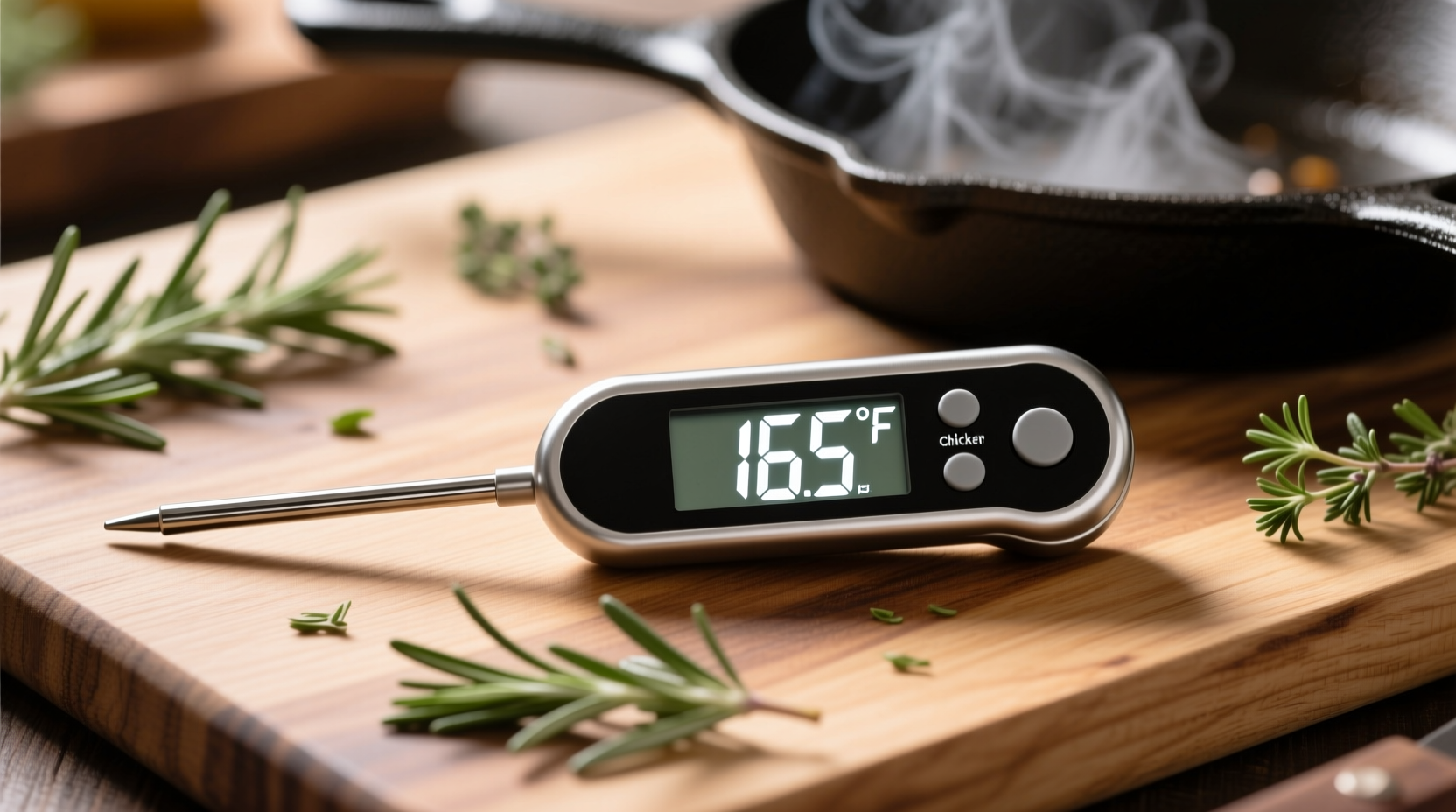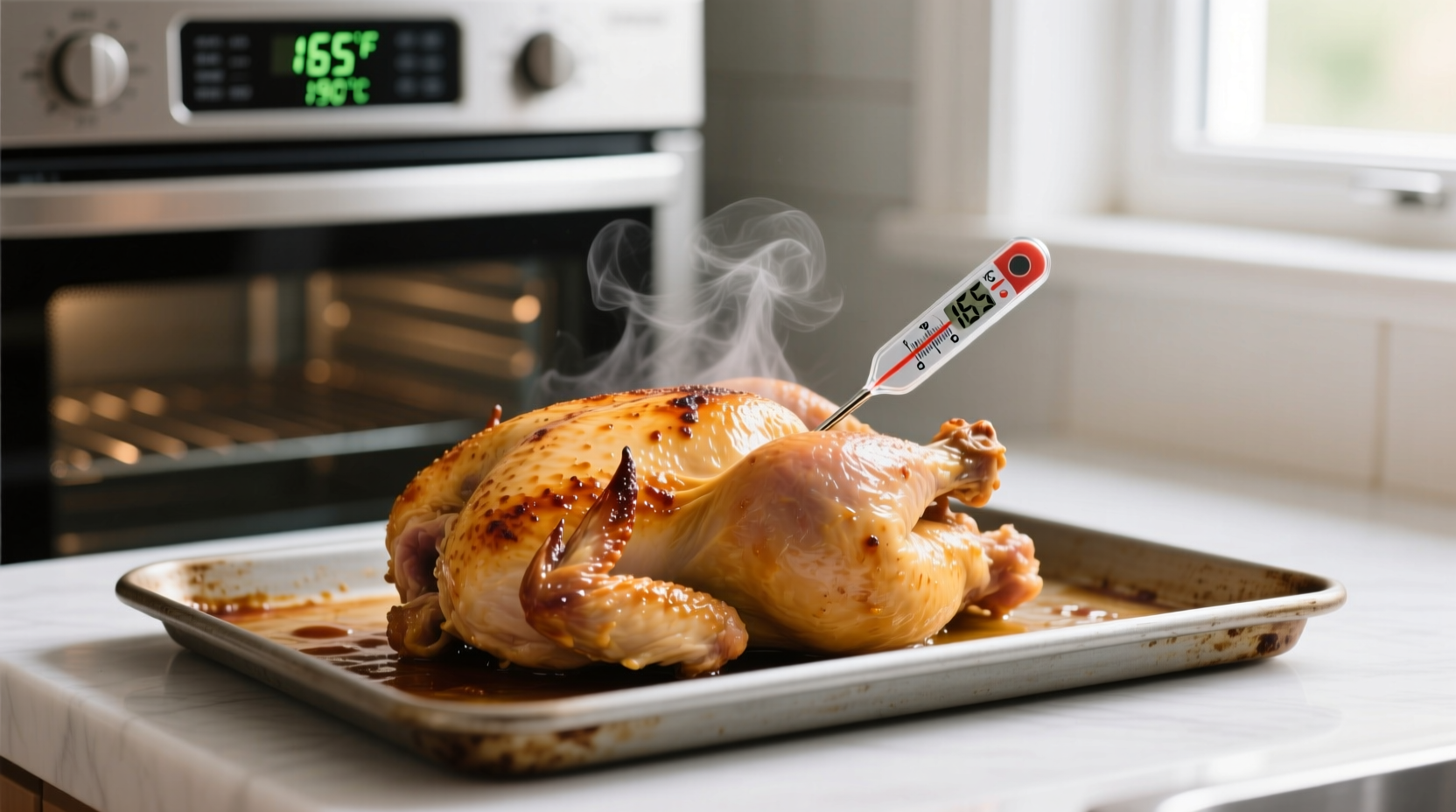The safe minimum internal temperature for all chicken parts is 165°F (74°C), measured with a food thermometer in the thickest part. For best results, roast chicken at 375°F-425°F oven temperature depending on the cut and desired outcome.
Ever pulled chicken from the oven only to find it dry as a bone or, worse, undercooked? You're not alone. Getting oven-cooked chicken perfectly juicy while ensuring food safety requires precise temperature control. This guide delivers the exact oven settings and internal temperature targets backed by food safety experts and culinary professionals. Whether you're preparing weeknight dinners or holiday feasts, you'll learn how to cook chicken breasts, thighs, drumsticks, and whole birds to tender perfection every time.
Why Temperature Control Matters for Chicken Safety and Quality
Chicken requires careful temperature management for two critical reasons: food safety and texture quality. The USDA Food Safety and Inspection Service confirms that 165°F (74°C) internal temperature is the only safe threshold that destroys harmful bacteria like salmonella and campylobacter. But hitting that exact mark while maintaining moisture requires understanding both oven temperature and cooking duration.
"Many home cooks make the mistake of relying solely on cooking time without verifying internal temperature," explains Antonio Rodriguez, culinary expert with professional kitchen experience. "A food thermometer isn't optional equipment—it's your essential safety tool."
Optimal Oven Temperatures by Chicken Cut
Different chicken parts require different oven approaches. Higher temperatures create better browning but risk drying out leaner cuts, while lower temperatures preserve moisture but extend cooking time. Here's the professional breakdown:
| Chicken Cut | Recommended Oven Temp | Approximate Cooking Time | Best For |
|---|---|---|---|
| Boneless breasts | 400°F-425°F | 18-22 minutes | Quick meals, slicing for salads |
| Bone-in breasts | 375°F-400°F | 30-35 minutes | Moist texture, family dinners |
| Thighs/drumsticks | 375°F-400°F | 35-45 minutes | Crispy skin, fall-off-the-bone tenderness |
| Whole chicken (3-5 lbs) | 375°F-400°F | 18-20 min/lb + 15 min rest | Holiday meals, meal prep |
Step-by-Step Cooking Process for Perfect Results
1. Prep Your Chicken Properly
Pat chicken completely dry with paper towels before seasoning. Moisture on the surface prevents proper browning. For whole birds, tuck wing tips under the body and tie legs together with kitchen string to promote even cooking.
2. Preheat and Position Correctly
Always preheat your oven to the target temperature. Place chicken on a wire rack set over a baking sheet for even air circulation, or in a shallow roasting pan. Position the oven rack in the middle third of the oven for consistent heat distribution.
3. Monitor Internal Temperature Religiously
Insert an instant-read thermometer into the thickest part of the meat, avoiding bones. Check temperature 5-10 minutes before expected finish time. Remove chicken from oven when it reaches 160°F-162°F—the temperature will continue rising to 165°F during resting.

4. Rest Before Slicing
Let chicken rest for 5-10 minutes (15-20 for whole birds) before cutting. This allows juices to redistribute throughout the meat. Cover loosely with foil to retain heat without steaming the skin.
Critical Context Boundaries: When Standard Guidelines Need Adjustment
While 165°F is the universal safety standard, several factors require temperature adjustments:
- High-altitude cooking: Above 3,000 feet, water boils at lower temperatures, requiring extended cooking times. Add 5-10 minutes per pound at elevations above 5,000 feet (source: USDA Food Safety and Inspection Service)
- Convection ovens: Reduce standard temperatures by 25°F when using convection settings due to more efficient heat circulation
- Starting temperature: Frozen chicken requires 50% longer cooking time and benefits from lower oven temperatures (325°F-350°F) to prevent exterior overcooking
Common Temperature Mistakes and How to Avoid Them
Even experienced cooks make these temperature-related errors:
- Mistake: Judging doneness by color or juices running clear
Solution: These methods are unreliable. Always use a calibrated food thermometer - Mistake: Overcrowding the pan
Solution: Leave 1-inch space between pieces to allow proper air circulation and even cooking - Mistake: Not accounting for carryover cooking
Solution: Remove chicken at 160°F-162°F to reach perfect 165°F after resting
Pro Tips for Juicy, Flavorful Oven Chicken
Professional techniques that transform ordinary chicken into extraordinary meals:
- Dry brine for 12-24 hours: Sprinkle chicken with salt (1 tsp per pound) and refrigerate uncovered. This enhances moisture retention and flavor penetration
- Reverse sear for whole birds: Start at 275°F until internal temperature reaches 140°F, then increase to 425°F for 15 minutes to crisp skin
- Butter basting: During the last 10 minutes of cooking, brush with herb-infused melted butter for added richness
- Thermometer placement: For bone-in pieces, insert thermometer into the thickest muscle area away from the bone for accurate reading
When to Use Lower or Higher Temperatures
Understanding temperature variations helps you adapt to different cooking scenarios:
- 325°F-350°F: Best for large cuts like whole chickens or when cooking frozen chicken. Slower cooking preserves moisture but requires careful monitoring
- 375°F: The sweet spot for most chicken preparations—balances browning with moisture retention
- 400°F-425°F: Ideal for boneless cuts and achieving crispy skin. Reduces cooking time but requires vigilant temperature monitoring
- 450°F+: Only for finishing techniques like broiling skin for extra crispness during the last 3-5 minutes
Essential Equipment for Temperature-Perfect Chicken
Invest in these tools to ensure consistent results:
- Digital instant-read thermometer: Look for one with a 2-3 second read time (Thermapen recommended)
- Oven thermometer: Verifies your oven's actual temperature (most home ovens have 25°F+ variance)
- Wire rack: Elevates chicken for even air circulation and prevents steaming
- Shallow roasting pan: Allows proper heat circulation without excessive oil pooling











 浙公网安备
33010002000092号
浙公网安备
33010002000092号 浙B2-20120091-4
浙B2-20120091-4